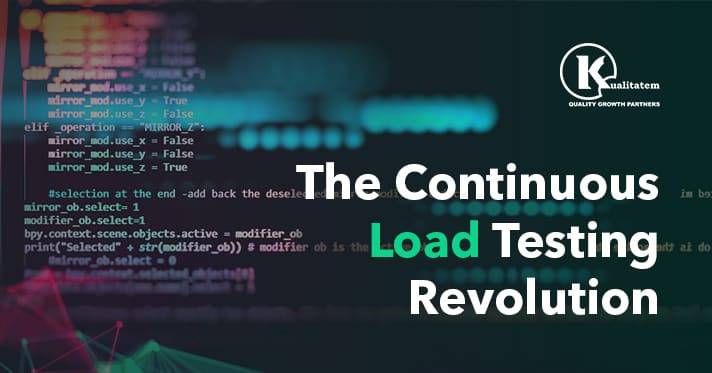The Continuous Load Testing Revolution

- October 30, 2019
- HibaSulaiman
Load testing is not a new concept in software testing. It has been the main domain for performance testers for a long time. Since organizations shift-left when performance testing in the DevOps environment, functional testers speed up to keep pace. Previously, performance testing was pushed back to the end of the release cycle in the waterfall approach, which is no longer valid. If performance is not up to speed, it is likely to remain behind your release schedule, which is why performance testing needs to be an integral part of DevOps. Enterprises look for reliable performance testing services to ensure the successful implementation of DevOps.
Let’s have a look at how performance testing can be an integral part of DevOps:
Keeping Track of Process Flows and APIs
Just like any other software tests, load testing keeps evolving throughout the software development life cycle. Typically, performance testing is limited to the application’s APIs only. Testers can add them to the scope of tests with the growing functional needs. Load testing all APIs or flows is not practically possible since these tests can cause a delay in the pipeline. However, flows and APIs that are frequently used and those that are an integral part of processes should be tested. Whereas, testers may test other processes at a lower frequency.
Redefine the Performance Goals
There is no hard and fast rule that applies to the success of tests. Performance goals can be adjusted according to the current progress of an application. For instance, when a new activity is added to the flow it may require processing time. Thus, you may need to make changes in reevaluating your success criteria.
Performance Measurement
During performance testing services, testers simulate a load of multiple users by accessing the system. It is a load generation technique due to which It is not possible to measure the response time of the application based only on these users. So performance testing gets trickier here.
Setting a Baseline
With the help of previous successful tests and their results, the load testers can set a baseline for future tests. It may be useful in redefining the success criteria or simply by adding them to additional metrics.
Comparing Load Tests
In the DevOps environment, there are continuous variations in the results of the performance tests. Load testers need to be very careful when observing these variations as they can cause confusion. When the results under a certain load change, testers should also change the baseline.
Continuous Performance Testing
Typically, performance testing was done at the end of the software development process. But now things have changed. It is important to get performance testing services that carry out continuous load testing as the application moves from production to release. When concurrent tests are run, they may affect each other. So, it is necessary to ensure they are not working on the same APIs.
Testing your apps for performance at the end of software development process can be a hurdle in DevOps. It slows down the release cycle or causes performance issues at the end failing to achieve customer expectations. Load testing in DevOps won’t be a difficult task, so it should be made a part of the continuous development process. So the key to achieve successful performing apps is by testing them often, fail fast and iterate them until the desired results are achieved.











